MUDRAS
Mudras are a non-verbal mode of communication and self-expression, consisting of hand gestures and finger postures. They are symbolic sign based finger patterns taking the place, but retaining the efficacy of the spoken word, and are used to evoke in the mind ideas symbolizing divine powers or the deities themselves. The composition of a mudra is based on certain movements of the fingers; in other words, they constitute a highly stylized form of gestureal communication. It is an external expression of ‘inner resolve’, suggesting that such non-verbal communications are more powerful than the spoken word
1.Dharmachakra Mudra

Mudra of turning the Wheel of the Teaching.
Dharmachakra in Sanskrit means the ‘Wheel of Dharma’. This mudra symbolizes one of the most important moments in the life of Buddha, the occasion when he preached to his companions the first sermon after his Enlightenment in the Deer Park at Sarnath. It thus denotes the setting into motion of the Wheel of the teaching of the Dharma. In this mudra the thumb and index finger of both hands touch at their tips to form a circle. This circle represents the Wheel of Dharma, or in metaphysical terms, the union of method and wisdom.
2.Bhumisparsha Mudra
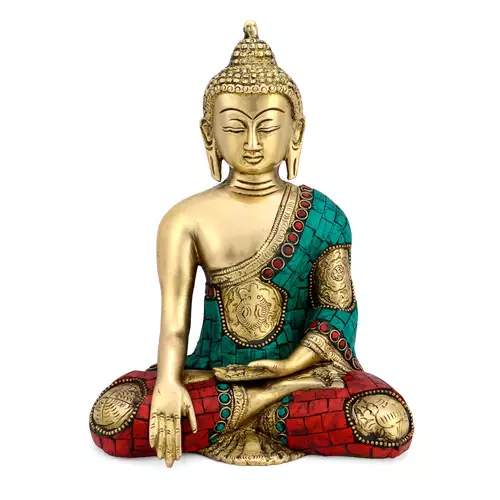
Literally Bhumisparsha translates into ‘touching the earth’. It is more commonly known as the ‘earth witness’ mudra. This mudra, formed with all five fingers of the right hand extended to touch the ground, symbolizes the Buddha’s enlightenment under the bodhi tree, when he summoned the earth goddess, Sthavara, to bear witness to his attainment of enlightenment. The right hand, placed upon the right knee in earth-pressing mudra, and complemented by the left hand-which is held flat in the lap in the dhyana mudra of meditation, symbolizes the union of method and wisdom, samasara and nirvana, and also the realizations of the conventional and ultimate truths. It is in this posture that Shakyamuni overcame the obstructions of Mara while meditating on Truth.
3.Varada Mudra
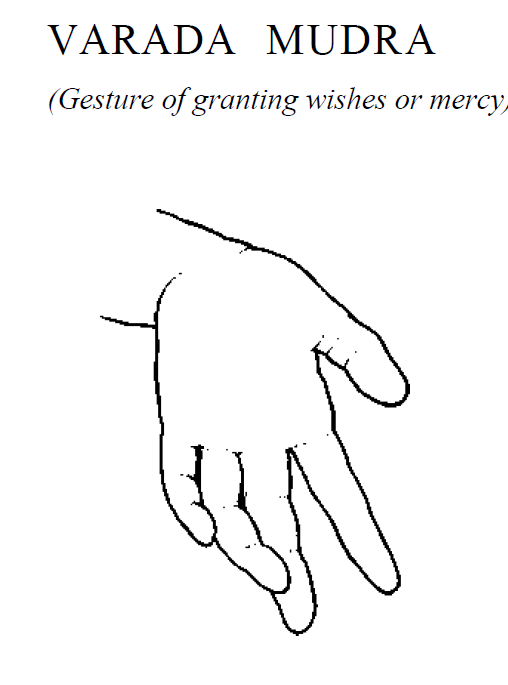
Mudra of giving or generosity.
It is the mudra of the accomplishment of the wish to devote oneself to human salvation. It is nearly always made with the left hand, and can be made with the arm hanging naturally at the side of the body, the palm of the open hand facing forward, and the fingers extended.
4.Dhyan Mudra

The Dhyana mudra is the mudra of meditation, of concentration on the Good law, and of the attainment of spiritual perfection.
The Dhyana mudra may be made with one or both hands. When made with a single hand the left one is placed in the lap, while the right may be engaged elsewhere. The left hand making the Dhyana mudra in such cases symbolizes the female left-hand principle of wisdom. Ritual objects such as a text, or more commonly an alms bowl symbolizing renunciation, may be placed in the open palm of this left hand.
5. Abhay Mudra
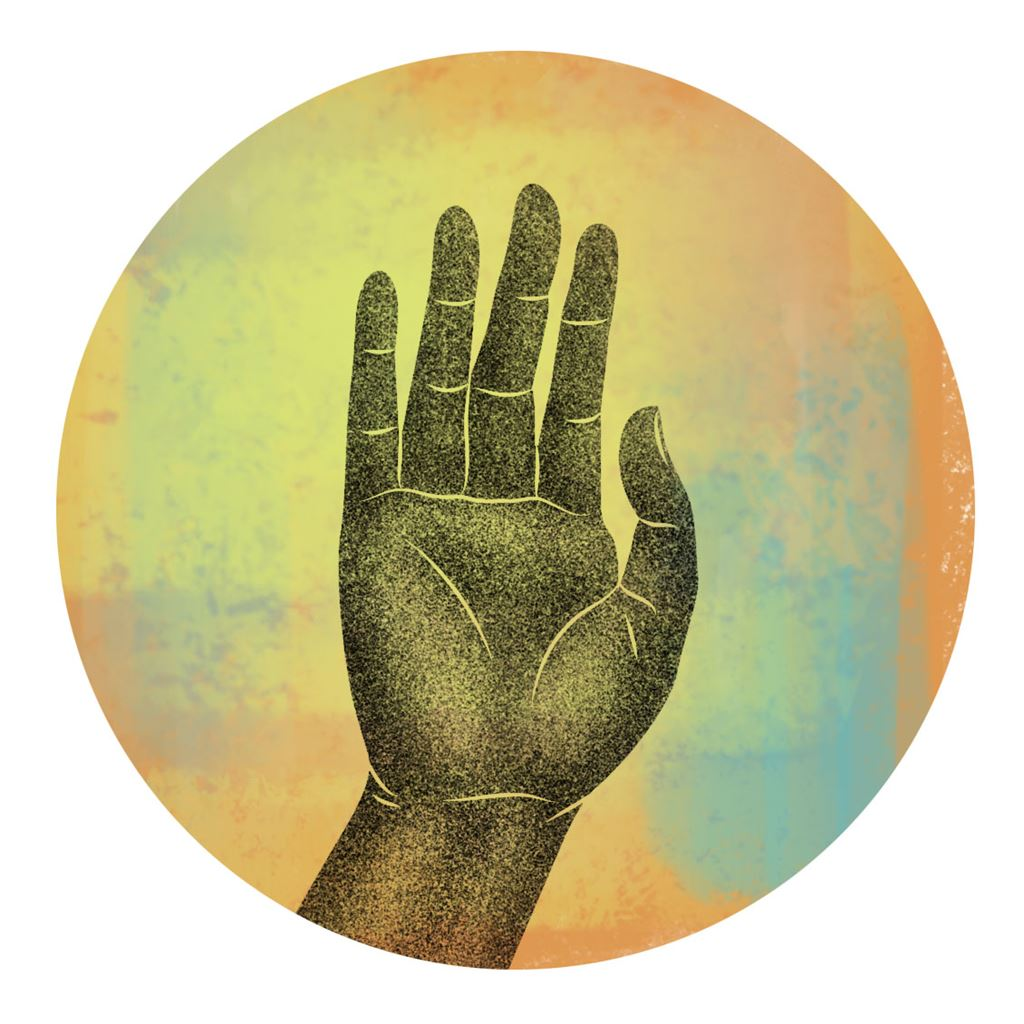
Mudra of blessing or protection.
Abhaya in Sanskrit means fearlessness. Thus this mudra symbolizes protection, peace, and the dispelling of fear. It is made with the right hand raised to shoulder height, the arm crooked, the palm of the hand facing outward, and the fingers upright and joined. The left hand hangs down at the side of the body.
6.BODHYAGRI
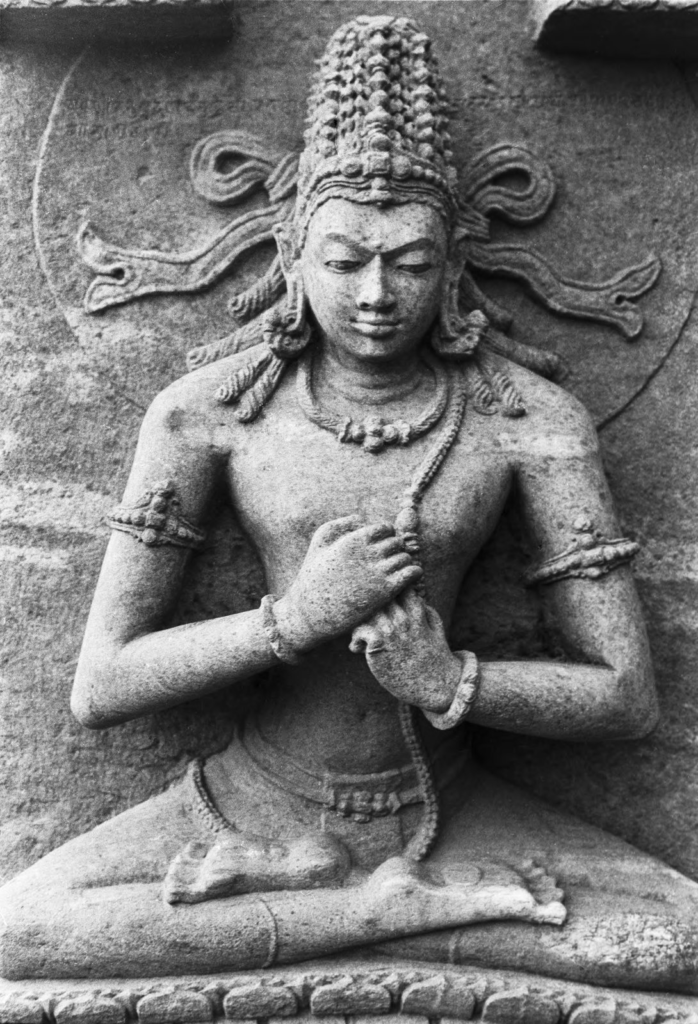
Mudra of supreme wisdom.
The right forefinger is grasped in the fist of the left hand. It is subject to a variety of interpretations. Some sources refer to it as “the mudra of the six elements”: the five elements—earth, water, air, fire, and ether—all surrounding and protecting man.
7.VITARKA
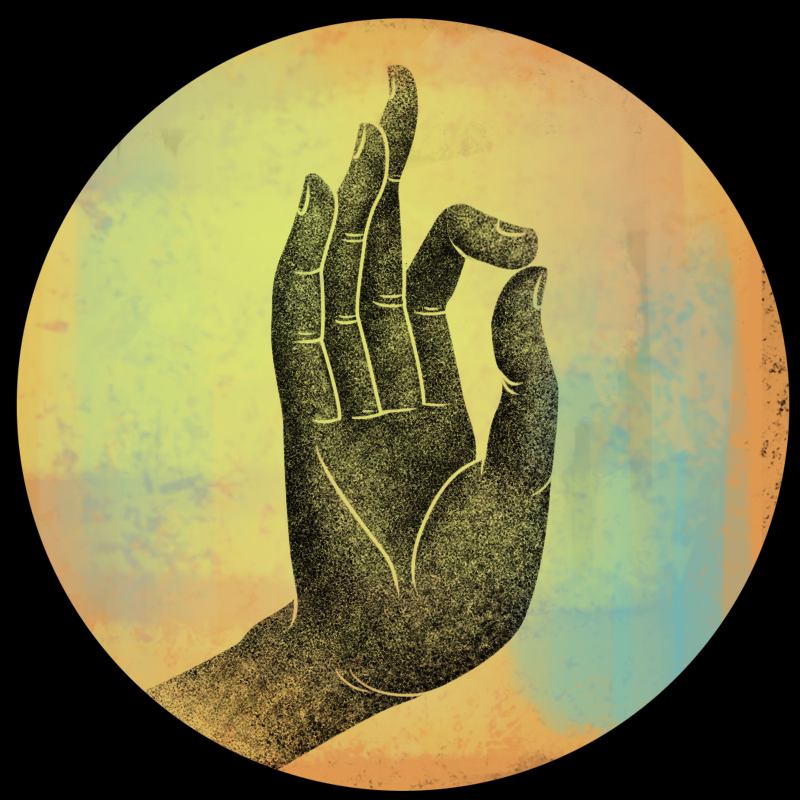
Teaching mudra.
Held at chest level, the right hand faces outward. The thumb and forefinger form a circle, symbolizing the “Wheel of the Teaching.” Pointing downward, the left hand faces outward or lies palm up in the lap.
8.ANJALI

Mudra of greeting. Namaskar Mudra /Hridayanjali Mudra
The universal greeting and gesture of respect throughout the Buddhist world. Formed by placing the palms together at the level of the heart, with the fingertips pointed upward.
9. Karana Mudra

This gesture signifies the warding off evil which is performed by raising the index and the little finger, and folding the other fingers. It helps in reducing sickness or negative thoughts.
10.Vajra Mudra
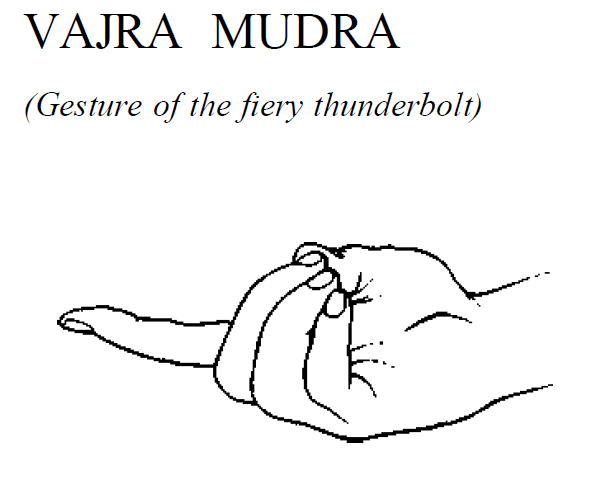
This gesture denotes the fiery thunderbolt that symbolizes the five elements, i.e. air, water, fire, earth, and metal. It is performed with the help of right fist, left hand forefinger, which placed by enclosing the erect forefinger of the left hand in the right fist with the tip of the right forefinger touching (or curled around) the tip of the left forefinger.
11. Uttarabodhi Mudra

This gesture denotes the supreme enlightenment through connecting oneself with divine universal energy. It is performed with the help of both the hand, which placed at the heart and the index fingers touching and pointing upwards and the remaining fingers intertwined.
12.Vajrapradama Mudra

The mudra of unshakable self confidence.
It involves crossing the open hands over the heart.

